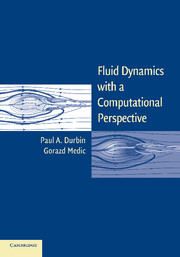8 - Interfaces
Published online by Cambridge University Press: 28 January 2010
Summary
When two fluids occupy the domain, with a sharp boundary between them, we speak of fluid–fluid interfaces or just interfaces. To the extent that the fluids are immiscible, their interface is a type of boundary. The governing laws are unchanged; the new features are boundary conditions. They are of a different nature from those at fixed, solid walls. They depend on the flow on either side of the interface; indeed, the position of the interface is itself a variable. Interface conditions are alternatively described as matching conditions: velocities and stresses on either side must properly match at the interface. Despite this complicating aspect, the view that only boundary conditions are at issue provides some clarity.
The interface may be between liquid and gas – say, water and air. Often the matching conditions are simplified in this case. The density of air is three orders of magnitude smaller than that of water. For many purposes, the forces exerted by the air on the water can be neglected; then the interface is a force-free surface, insofar as the hydrodynamics are concerned. It nevertheless is a moveable surface, whose position must be solved as part of the analysis.
Or the interface could be between two viscous fluids – say, oil and water. The viscosity jumps across their common boundary. Conditions of stress continuity then determine the interaction between the fluid motions.
Oil and water might be placed in a vertical tube. The interface then curves in consequence of surface tension and the angle of contact with the tube. The line of contact is a three-phase boundary, among water, oil, and solid wall.
- Type
- Chapter
- Information
- Fluid Dynamics with a Computational Perspective , pp. 307 - 342Publisher: Cambridge University PressPrint publication year: 2007

